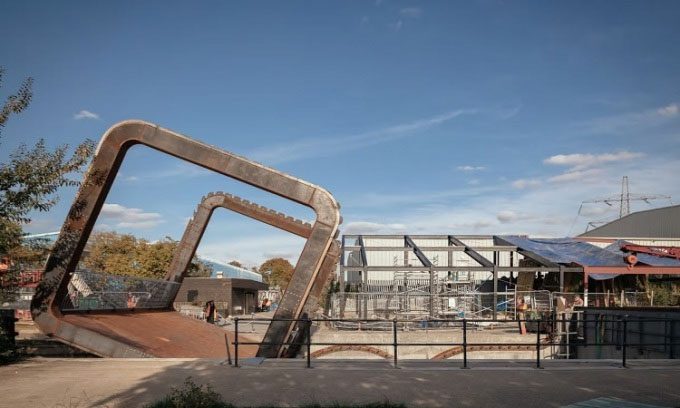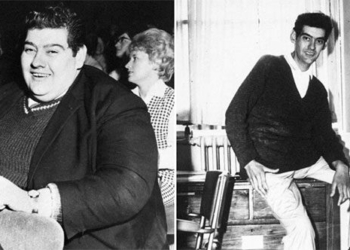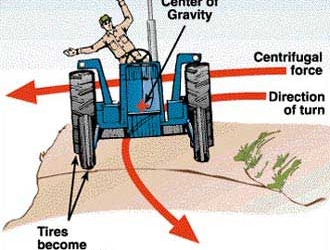The Cody Dock Rolling Bridge can rotate 180 degrees without the use of motors or electricity, allowing boats to safely pass underneath.

The rolling bridge operates using a hand-operated winch. (Photo: Jim Stephenson).
The Cody Dock Rolling Bridge is part of a redevelopment project for an old industrial dock area in London, England. Currently, the bridge serves as a hub for the artist community. This river-crossing bridge can rotate 180 degrees to make way for boats passing underneath, as reported by New Atlas on March 3.
During the renovation, local authorities decided to reopen the dock, necessitating the removal of the old dam in the area and the construction of a new pedestrian bridge. Simon Myers, co-founder of the Gasworks Dock Partnership responsible for the dock’s redevelopment, initially intended to install a traditional lift bridge. However, when architect Thomas Randall-Page heard about the project, he approached Myers with the idea of constructing a unique rolling bridge with the assistance of engineer Tim Lucas.
The bridge is partly inspired by Victorian-era infrastructure such as locks on canals and is constructed from weather-resistant steel and oak, weighing 13 tons. In its resting position, pedestrians and cyclists can cross the bridge. However, when boats need to pass underneath, steel gears installed at both ends of the bridge allow it to roll along two tracks set in a concrete hinge, significantly increasing the clearance above the boats. The entire process takes about 20 minutes.
The bridge includes concrete ballast and scrap metal to counterbalance the weight of the bridge deck, allowing it to roll smoothly 180 degrees before coming to a complete stop. The entire mechanism is designed so carefully that no motors or electricity are required for movement. Instead, the bridge operates entirely through a hand-operated winch.
“Moving a heavy structure requires a balancing system, and this bridge design operates on that principle. We hope the bridge will become a significant landmark and symbol for the creative community here,” said Randall-Page.




















































